10 Endangered species in China
panda, tiger, pangolin
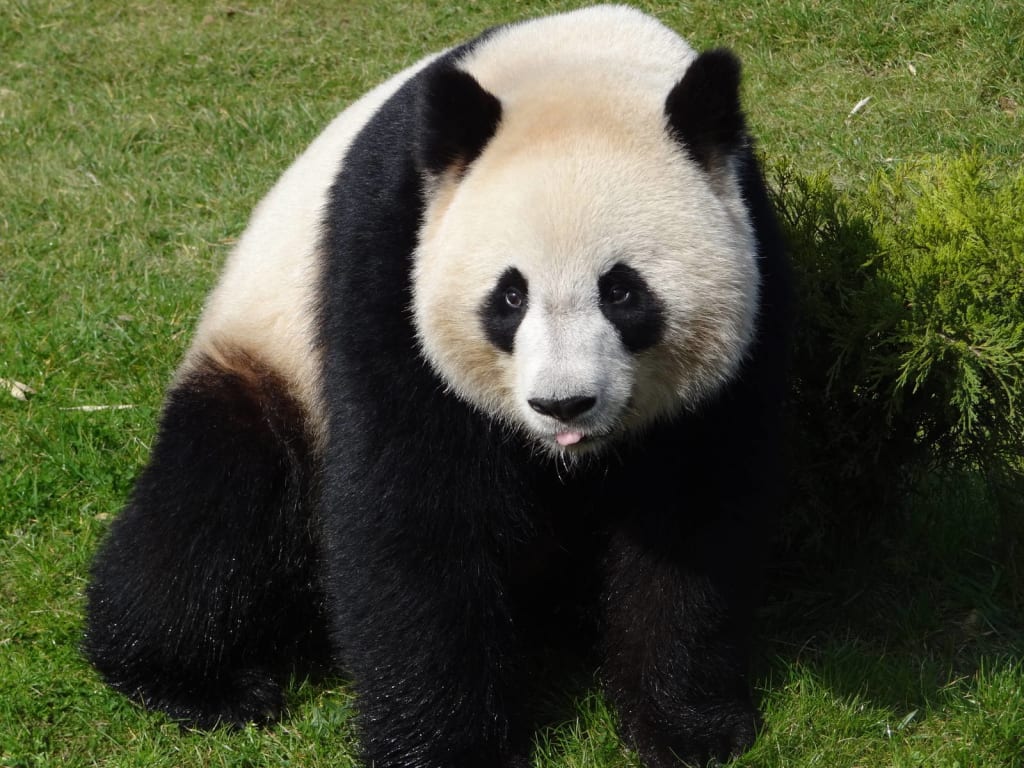
1., Giant Panda (Ailuropoda melanoleuca):
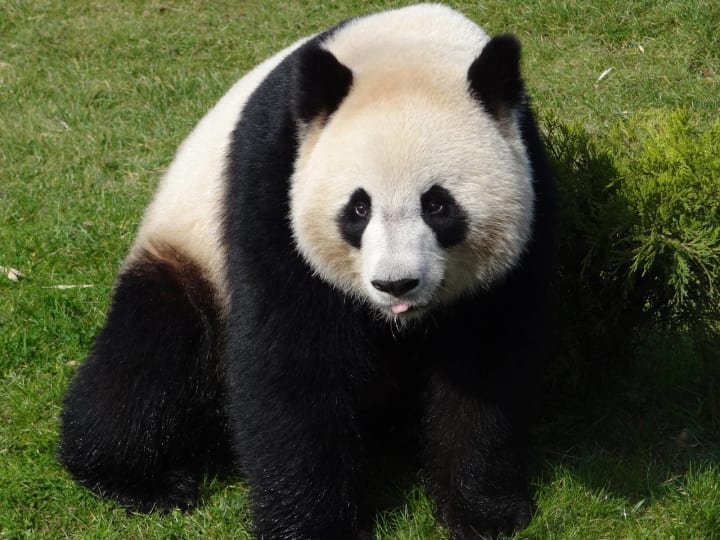
The Giant Panda (Ailuropoda melanoleuca) is a species of bear native to the mountainous regions of central China. It is one of the most recognizable and beloved animals in the world, known for its distinctive black and white fur. Here are some detailed facts about the Giant Panda:
Physical Appearance:
Giant pandas have a unique and recognizable appearance. They have a stocky body with strong limbs, adapted for climbing trees and grasping bamboo. Their fur is predominantly white, with black patches around their eyes, ears, muzzle, legs, and shoulders. This coloration serves as camouflage in their natural habitat. Pandas have a large head with round ears and powerful jaws equipped with strong teeth.
Size and Weight:
Adult giant pandas are generally large, with males being larger than females. On average, males measure around 4-5 feet (1.2-1.5 meters) in length, stand about 2-3 feet (0.6-0.9 meters) tall at the shoulder, and weigh between 220-330 pounds (100-150 kilograms). Females are slightly smaller, measuring about 3-4 feet (0.9-1.2 meters) in length and weighing around 155-220 pounds (70-100 kilograms).
Habitat and Range:
Giant pandas are native to the mountainous regions of southwestern China, primarily in Sichuan, Shaanxi, and Gansu provinces. They inhabit dense bamboo forests at elevations of 5,000 to 13,000 feet (1,500 to 4,000 meters) above sea level. These forests provide the pandas with both food and shelter.
Diet:
Giant pandas are primarily herbivorous, with bamboo making up the majority of their diet. They have a specialized digestive system adapted to break down and extract nutrients from bamboo, which is low in nutritional value. An adult panda can consume around 20-40 pounds (9-18 kilograms) of bamboo each day, spending up to 12 hours eating. Despite being classified as carnivores, pandas have a carnivorous digestive system that is unable to efficiently digest meat.
Behavior:
Pandas are generally solitary animals, with adult males having larger home ranges than females. They are predominantly crepuscular, being more active during dawn and dusk. Pandas are excellent climbers and are known to descend from the mountains in search of lower elevations during the winter months. They have also been observed to swim and play in water.
Conservation Status and Threats:
Giant pandas are listed as endangered by the International Union for Conservation of Nature (IUCN). Their population has faced severe declines due to habitat loss, fragmentation, and human encroachment. Deforestation and conversion of bamboo forests for agriculture and infrastructure development have significantly reduced their available habitat. Additionally, poaching and illegal hunting have historically posed a threat to pandas, although conservation efforts have helped reduce these activities.
Conservation Efforts:
China has made significant efforts to conserve the giant panda. It has established numerous protected areas and nature reserves to safeguard their habitat. Conservation organizations work on breeding programs, research, and public awareness campaigns to promote panda conservation. The Chinese government has also implemented strict laws and penalties for poaching and illegal trade of panda products. As a result of these collective efforts, the giant panda population has shown signs of recovery in recent years, though it still remains endangered.
The Giant Panda's charismatic appearance and endangered status have made it a symbol of conservation worldwide. Efforts to protect this iconic species continue to be vital for its survival and the preservation of biodiversity in China.
2., South China Tiger (Panthera tigris amoyensis):
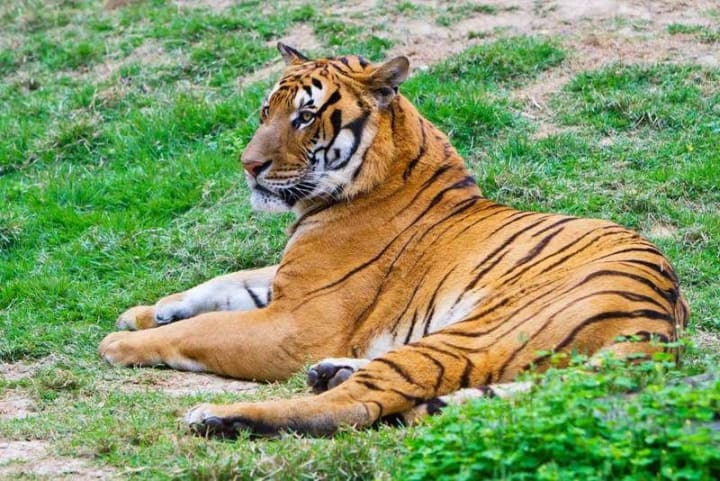
The South China Tiger (Panthera tigris amoyensis) is a subspecies of tiger that is native to the southern region of China. It is one of the most critically endangered tiger subspecies, with a highly restricted and fragmented range. Here are some detailed facts about the South China Tiger:
Physical Appearance:
South China Tigers are medium-sized compared to other tiger subspecies. They have a muscular build with a slender body, powerful limbs, and a long tail. The fur of the South China Tiger is characterized by a rich orange color, with black stripes that vary in thickness and pattern. The underbelly is usually white, and the ears have a prominent white spot that acts as a visual communication tool.
Size and Weight:
Males are typically larger than females. Adult South China Tigers can measure between 8 and 9.5 feet (2.4 and 2.9 meters) in length from the head to the tip of the tail. They stand about 2.5 to 3 feet (0.8 to 0.9 meters) tall at the shoulder. Males can weigh between 330 and 440 pounds (150 and 200 kilograms), while females generally weigh between 220 and 280 pounds (100 and 130 kilograms).
Habitat and Range:
Historically, the South China Tiger inhabited a range spanning various provinces in southern China, including Fujian, Guangdong, Hunan, Jiangxi, and Zhejiang. However, due to extensive habitat loss and fragmentation, the tiger's current distribution is limited to small isolated areas. These areas consist of mixed forests, grasslands, and shrublands.
Behavior and Diet:
South China Tigers are solitary and territorial animals. They are predominantly nocturnal and prefer to hunt during the cover of darkness. Their diet mainly consists of ungulates, such as deer and wild boar, but they can also prey on smaller mammals and occasionally birds. Tigers are known for their stealth and strength, employing ambush tactics to catch their prey.
Conservation Status and Threats:
The South China Tiger is critically endangered, and it is considered to be functionally extinct in the wild. There have been no confirmed sightings of this subspecies in its natural habitat for several decades. The primary threats to the South China Tiger's survival include habitat loss, poaching, and depletion of prey species. Habitat destruction, primarily due to human activities such as deforestation and agriculture expansion, has severely reduced suitable tiger habitat.
Conservation Efforts:
Efforts to conserve the South China Tiger involve captive breeding programs, habitat restoration initiatives, and reintroduction plans. Captive breeding programs aim to maintain a genetically diverse population of tigers while working towards their eventual reintroduction into protected areas. These programs also serve as educational platforms to raise awareness about tiger conservation and the importance of preserving their habitat. However, successful reintroduction into the wild remains challenging due to the lack of suitable and secure habitat.
The South China Tiger's conservation is a crucial priority to prevent the complete extinction of this subspecies. Collaborative efforts between conservation organizations, governments, and local communities are necessary to protect their remaining habitat and implement strategies for their recovery.
3., Yangtze River Dolphin (Lipotes vexillifer):

The Yangtze River Dolphin, scientifically known as Lipotes vexillifer, was a critically endangered cetacean species that was native to the Yangtze River in China. It was also commonly referred to as the Baiji, Yangtze River Dolphin, or Chinese River Dolphin. Sadly, it is believed to be functionally extinct, as there have been no confirmed sightings of the species since 2002. I can provide you with detailed information about the Yangtze River Dolphin based on what is known up until my last knowledge update in September 2021.
Physical Description:
The Baiji was characterized by its unique appearance and adaptations to its freshwater environment. It had a long, slender body measuring between 2.3 to 2.5 meters (7.5 to 8.2 feet) in length, with some individuals reaching up to 2.7 meters (8.9 feet). Its coloration varied from light gray to bluish-gray on the dorsal side, fading to white on the ventral side. The dolphin had a long, narrow beak with sharp, conical teeth. Its flippers were small and rounded, and its dorsal fin was low and triangular in shape.
Habitat and Range:
The Yangtze River Dolphin was endemic to the Yangtze River system in China, which includes the main channel, tributaries, and associated lakes. It primarily inhabited the middle and lower reaches of the river, including the Dongting and Poyang Lakes. The species was known for its ability to navigate through complex river systems and adapt to various water depths and habitats within the Yangtze River basin.
Behavior and Diet:
The Baiji was a highly aquatic species, spending its entire life in the water. It was a solitary and elusive animal, often difficult to observe. The dolphin was known for its acrobatic behavior, frequently leaping out of the water and performing somersaults. It also had a unique swimming pattern with an undulating motion of the body.
As a freshwater dolphin, the Baiji had adapted its diet to the available prey in the Yangtze River. Its diet mainly consisted of fish, including various species of carp, catfish, and other small freshwater fish. The dolphin used echolocation to navigate and locate its prey in the murky waters of the river.
Conservation Status and Threats:
The Yangtze River Dolphin was declared critically endangered by the International Union for Conservation of Nature (IUCN) and was considered one of the rarest and most endangered cetacean species in the world. The primary factors contributing to its decline and possible extinction were human activities and habitat degradation.
The construction of numerous dams and infrastructure projects along the Yangtze River disrupted the dolphin's habitat and restricted its movement. Increased ship traffic, pollution from industrial and agricultural activities, overfishing, and entanglement in fishing gear further exacerbated the species' decline. The introduction of electric fishing gear in the 1980s, which caused mass dolphin strandings, had a severe impact on the population.
Conservation Efforts:
Efforts to conserve the Baiji were undertaken by various organizations, including the Chinese government and international conservation groups. In 1992, a protected area, the Tian'ezhou Baiji National Nature Reserve, was established to safeguard the dolphin's habitat. However, these conservation measures were unable to prevent the decline of the species, and despite numerous expeditions and search efforts, no Baiji individuals have been reliably sighted since 2002.
4., Chinese Alligator (Alligator sinensis):
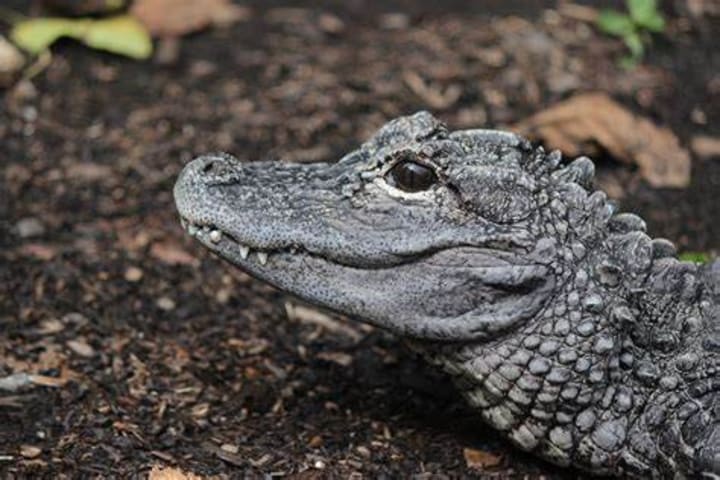
The Chinese Alligator, scientifically known as Alligator sinensis, is a small and critically endangered crocodilian species native to China. It is one of only two alligator species in the world, the other being the American alligator (Alligator mississippiensis). Here are the full details about the Chinese Alligator as of my last knowledge update in September 2021:
Physical Description:
The Chinese Alligator is a relatively small species compared to its American counterpart. Adults typically measure between 1.5 to 2 meters (4.9 to 6.6 feet) in length, although larger individuals have been recorded reaching up to 2.5 meters (8.2 feet). It has a robust body with armored skin covered in dark, brownish-green scales. Its snout is broad and rounded, and its eyes and nostrils are positioned on top of the head, allowing it to stay mostly submerged while observing its surroundings.
Habitat and Range:
The Chinese Alligator is primarily found in the lowland freshwater marshes, lakes, and slow-moving rivers of eastern China. Historically, it had a wider range that included parts of northern Vietnam and possibly Korea. However, due to habitat loss and human activities, its current range is limited to small areas within Anhui, Jiangsu, and Zhejiang provinces of China.
Behavior and Diet:
Chinese Alligators are mostly solitary and predominantly nocturnal. They are well-adapted to their aquatic habitat, with a streamlined body and a powerful tail for swimming. They are also capable of digging burrows in riverbanks or marshes, providing them with shelter during periods of extreme temperature or drought.
The diet of Chinese Alligators consists mainly of fish, amphibians, reptiles, and small mammals. They are opportunistic predators and will consume prey that is readily available in their environment. They use their strong jaws and teeth to capture and subdue their prey, often ambushing them from the water.
Conservation Status and Threats:
The Chinese Alligator is listed as critically endangered by the International Union for Conservation of Nature (IUCN). It is one of the most endangered crocodilian species in the world. The main threats to its survival are habitat destruction, degradation, and fragmentation.
The conversion of wetlands for agriculture, industrial development, and urbanization has resulted in the loss of its natural habitat. Drainage of wetlands and alteration of water regimes have further exacerbated the decline of suitable habitat for the species. Pollution from agricultural runoff and industrial activities also poses a threat to the Chinese Alligator.
Conservation Efforts:
Efforts to conserve the Chinese Alligator have been implemented by both governmental and non-governmental organizations. Captive breeding programs have played a crucial role in the conservation of the species. Several institutions in China maintain breeding facilities and conduct research to improve captive breeding techniques and reintroduction programs.
Reintroduction efforts have been carried out in designated protected areas, such as the Xuancheng and Tian-e-Zhou Oxbow Nature Reserves, where captive-bred alligators are released into the wild. These programs aim to establish self-sustaining populations and restore the species' range.
Furthermore, habitat restoration projects, public awareness campaigns, and legislation to protect remaining wetland habitats have been initiated to conserve the Chinese Alligator. However, the species still faces significant challenges due to the continued loss and degradation of its habitat.
In conclusion, the Chinese Alligator is a critically endangered crocodilian species found in eastern China. Its small population size and limited range make it highly vulnerable to habitat loss and degradation. Ongoing conservation efforts, including captive breeding and reintroduction programs, are crucial for the survival and recovery of this species.
6., Chinese Pangolin (Manis pentadactyla):
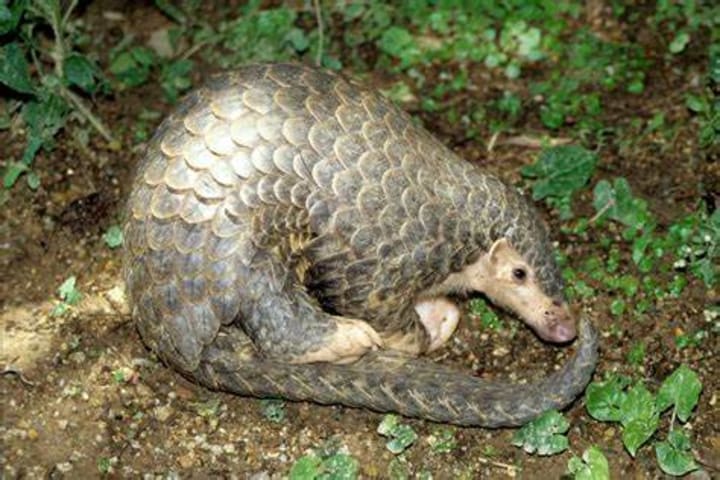
The Chinese Pangolin, scientifically known as Manis pentadactyla, is a mammalian species belonging to the family Manidae. It is one of the eight extant pangolin species and is native to China and other parts of Southeast Asia. The Chinese Pangolin is also commonly referred to as the Scaly Anteater due to its unique, protective scales. Here are the full details about the Chinese Pangolin:
Physical Description:
The Chinese Pangolin has a distinct appearance characterized by its overlapping, keratin scales that cover its body. The scales are sharp-edged, brownish, and hard, providing excellent protection against predators. The pangolin's body is elongated and cylindrical, with short legs and a long, prehensile tail. Adult individuals measure around 60 to 90 centimeters (2 to 3 feet) in length and weigh between 2 to 7 kilograms (4.4 to 15.4 pounds).
Habitat and Range:
The Chinese Pangolin is found in various habitats, including forests, grasslands, and agricultural landscapes across southern China, as well as in neighboring countries such as Vietnam, Laos, Myanmar, and parts of India. They are primarily terrestrial but are capable of climbing trees and swimming if necessary.
Behavior and Diet:
Chinese Pangolins are primarily nocturnal and spend most of their active hours foraging for food. They are solitary animals, except during the breeding season. Pangolins have poor eyesight but possess an acute sense of smell and hearing, which helps them locate their prey and avoid predators.
The Chinese Pangolin is an insectivorous species, specializing in feeding on ants and termites. Its long, sticky tongue can extend up to 40 centimeters (16 inches) to capture its prey. Using its strong claws, it tears open nests and termite mounds to access the insects inside.
Conservation Status and Threats:
The Chinese Pangolin is listed as critically endangered by the International Union for Conservation of Nature (IUCN). It faces numerous threats, primarily driven by illegal wildlife trade and habitat loss.
Pangolins are heavily poached for their scales, which are used in traditional Chinese medicine and for their meat, considered a delicacy in some countries. This demand has led to a significant decline in pangolin populations. Additionally, habitat destruction and fragmentation due to deforestation, agricultural expansion, and urbanization have further contributed to their decline.
Conservation Efforts:
Efforts are underway to conserve the Chinese Pangolin and protect its remaining populations. China has enacted legislation to ban the hunting and trade of pangolins, imposing strict penalties on offenders. Law enforcement agencies collaborate with conservation organizations to combat wildlife trafficking.
Conservation initiatives also focus on raising awareness about the importance of pangolins and their conservation needs. Research and monitoring projects are conducted to gather data on population status, distribution, and ecological requirements.
Breeding and reintroduction programs are being implemented to increase pangolin populations in protected areas. These programs aim to rehabilitate and release confiscated or injured pangolins back into the wild.
International cooperation is also critical for conserving the Chinese Pangolin, as it is a transboundary species. Collaboration among countries involved in its range helps combat illegal wildlife trade and promote conservation efforts.
In conclusion, the Chinese Pangolin is a critically endangered mammal known for its distinctive scales. It faces severe threats due to illegal hunting and habitat loss. Ongoing conservation efforts, including legal protection, public awareness campaigns, and habitat restoration, are crucial for the survival of this species.
7., Amur Leopard (Panthera pardus orientalis):
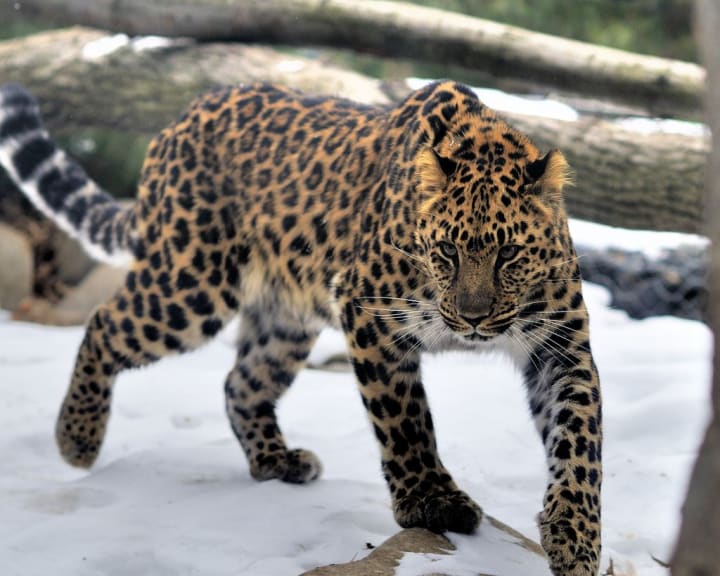
The Amur Leopard, scientifically known as Panthera pardus orientalis, is a critically endangered big cat species native to the Russian Far East and northeastern China. It is one of the rarest and most endangered felid species in the world. Here are the full details about the Amur Leopard:
Physical Description:
The Amur Leopard is a large felid, similar in size to other leopard subspecies. Males typically weigh between 32 to 48 kilograms (71 to 106 pounds), while females are slightly smaller, weighing around 25 to 43 kilograms (55 to 95 pounds). They have a muscular build with long, slender bodies and relatively short legs. The coat of the Amur Leopard is dense, thick, and typically pale golden in color. It features rosette patterns with thick black borders, providing excellent camouflage in their forested habitat.
Habitat and Range:
The Amur Leopard is primarily found in the temperate and broadleaf forests of the Russian Far East, including the Primorsky Krai region, as well as in the Jilin and Heilongjiang provinces of northeastern China. It inhabits a mix of mountainous terrain, dense forests, and riverine valleys. The leopard's range has become severely fragmented due to habitat loss and human encroachment.
Behavior and Diet:
Amur Leopards are solitary and elusive creatures, known for their elusive nature and secretive behavior. They are primarily nocturnal, being most active during the twilight hours. The leopards are agile climbers and skilled swimmers. They use their stealth and camouflage to ambush prey.
The diet of Amur Leopards mainly consists of medium-sized ungulates, such as roe deer, sika deer, and musk deer. They may also hunt small mammals and occasionally feed on birds and reptiles. They are known for their strength and ability to drag their kills to trees to protect them from scavengers.
Conservation Status and Threats:
The Amur Leopard is listed as critically endangered by the International Union for Conservation of Nature (IUCN). It is estimated that there are fewer than 100 individuals remaining in the wild, making it one of the most endangered big cat species on the planet. The primary threats to its survival are habitat loss, poaching, and human-wildlife conflict.
Habitat loss and fragmentation occur due to deforestation, illegal logging, infrastructure development, and expansion of human settlements. This encroachment reduces the available habitat for the leopards, isolating populations and restricting their movement.
Poaching for their fur and body parts, driven by the illegal wildlife trade, poses a significant threat to Amur Leopards. Their beautiful coats fetch high prices on the black market. Additionally, retaliatory killing and accidental trapping in snares set for other species further contribute to their decline.
Conservation Efforts:
Numerous conservation efforts are underway to protect and recover the Amur Leopard population. Governments, conservation organizations, and local communities collaborate on various initiatives to address the threats and preserve their habitat.
Protected areas, such as the Land of the Leopard National Park in Russia and Hunchun Amur Tiger National Nature Reserve in China, have been established to safeguard critical leopard habitats. These areas provide a refuge for the leopards and support their recovery.
Anti-poaching measures, including increased law enforcement and wildlife crime investigations, aim to combat the illegal hunting and trade of Amur Leopards. Community engagement and education programs raise awareness about the importance of leopard conservation and promote coexistence between humans and wildlife.
8., Hainan Gibbon (Nomascus hainanus):
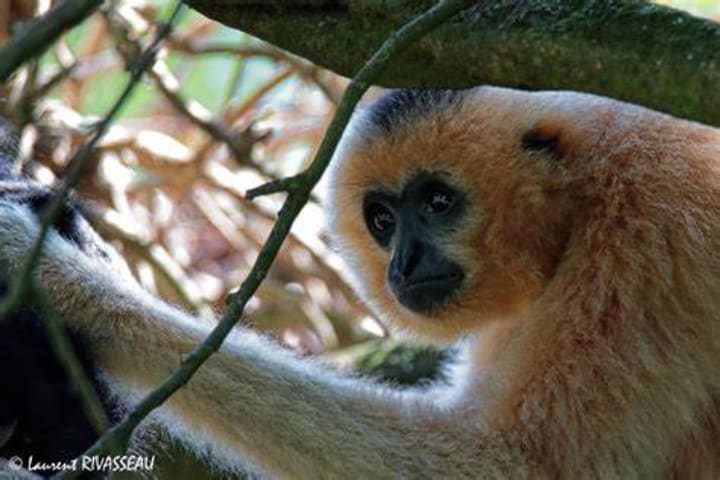
The Hainan Gibbon, scientifically known as Nomascus hainanus, is a critically endangered primate species endemic to Hainan Island, China. It is one of the rarest and most endangered primate species in the world. Here are the full details about the Hainan Gibbon:
Physical Description:
The Hainan Gibbon is a small ape species with a slender body and long limbs. Adult males typically measure around 55 to 60 centimeters (22 to 24 inches) in length, excluding the tail, which is absent in gibbons. Females are slightly smaller, measuring around 50 to 55 centimeters (20 to 22 inches). They have long, powerful arms that are longer than their legs, allowing them to brachiate through the forest canopy. The fur of the Hainan Gibbon is generally black, with some individuals having white eyebrows and cheeks.
Habitat and Range:
The Hainan Gibbon is found exclusively in the fragmented rainforests and montane forests of Hainan Island in southern China. It inhabits primary and secondary forests, including both evergreen and semi-evergreen forests. The species has a highly restricted range, with a current distribution limited to a few fragmented forest patches on the island.
Behavior and Diet:
Hainan Gibbons are highly arboreal and spend the majority of their time in the trees. They are known for their brachiation, swinging from branch to branch using their long arms. They are agile and acrobatic, capable of covering long distances in the forest canopy. Gibbons are territorial and live in small family groups consisting of an adult pair and their offspring.
The diet of Hainan Gibbons primarily consists of ripe fruits, supplemented with leaves, flowers, and occasionally insects. They are frugivorous and play a crucial role in seed dispersal, contributing to the maintenance and regeneration of forest ecosystems.
Conservation Status and Threats:
The Hainan Gibbon is listed as critically endangered by the International Union for Conservation of Nature (IUCN). It is considered one of the rarest primate species on Earth, with an estimated population of fewer than 30 individuals. The main threats to its survival are habitat loss, fragmentation, and hunting.
Deforestation and habitat degradation due to logging, agriculture, and infrastructure development have severely reduced the available habitat for the gibbons. The fragmentation of forests isolates gibbon populations, limiting their ability to find mates and decreasing genetic diversity.
Hunting and poaching also pose a significant threat to the Hainan Gibbon. Despite legal protection, they are sometimes targeted for their meat and for the illegal pet trade. These activities further contribute to the decline of the species.
Conservation Efforts:
Efforts are underway to protect and recover the Hainan Gibbon population. The Chinese government, in collaboration with local and international organizations, has implemented various conservation initiatives.
Protected areas, such as the Bawangling and Jianfengling Nature Reserves, have been established to conserve the remaining habitat of the Hainan Gibbon. These reserves aim to provide a safe and protected environment for the gibbons to thrive and reproduce.
Conservation programs focus on habitat restoration, reforestation, and sustainable land management practices to improve and expand suitable habitat for the gibbons. Efforts are also directed towards raising awareness among local communities and implementing alternative livelihood options to reduce dependence on forest resources.
Strict law enforcement and anti-poaching measures are implemented to combat illegal hunting and trade of the gibbons. Research and monitoring projects are conducted to gather data on population dynamics, behavior, and ecology, helping inform conservation strategies and management plans.
International cooperation and support play a crucial role in the conservation of the Hainan Gibbon. Collaborative efforts between governmental and non-governmental organizations aim to secure the future of this critically endangered primate species.
In conclusion, the Hainan Gibbon is a critically endangered primate endemic to Hainan Island in China. Its small population size, limited range, and habitat loss make it highly vulnerable to extinction. Conservation efforts, including habitat protection, anti-poaching measures, and community engagement, are essential for the survival and recovery of this species.
9., White-headed Langur (Trachypithecus leucocephalus):

The White-headed Langur (Trachypithecus leucocephalus) is a species of Old World monkey belonging to the family Cercopithecidae. It is also commonly known as the White-headed Leaf Monkey or the Silvered Langur. The species is primarily found in Southeast Asia, specifically in Vietnam and Laos.
Physical Description:
The White-headed Langur is a medium-sized primate with a distinctive appearance. Adults typically have a body length of about 50 to 65 centimeters (20 to 26 inches) and weigh around 7 to 10 kilograms (15 to 22 pounds). The species displays sexual dimorphism, with males being larger than females.
As the name suggests, the White-headed Langur is characterized by its unique coloration. The fur on the head, neck, and upper back is creamy white or light gray, while the rest of the body is predominantly black. Some individuals may exhibit variations in color, with the white fur on the head sometimes appearing more yellowish. The face is marked with a black mask around the eyes.
Habitat and Distribution:
The White-headed Langur inhabits a range of forested habitats, including tropical rainforests, subtropical forests, and limestone forests. It is primarily found in the mountainous regions of northern Vietnam and Laos, particularly in the provinces of Tuyen Quang, Ha Giang, Cao Bang, and Bac Kan in Vietnam, and the Khammouane and Bolikhamxay provinces in Laos.
Behavior and Diet:
White-headed Langurs are diurnal and arboreal creatures, spending most of their time in the trees. They are highly agile and skilled climbers, using their long limbs and prehensile tail to move through the forest canopy. They form social groups called troops, which usually consist of one adult male, several adult females, and their offspring. Troops can range in size from a few individuals to over 20 members.
The diet of the White-headed Langur mainly consists of leaves, fruits, flowers, and young shoots. They are folivorous, which means they consume a significant amount of leaves. This diet is supplemented with a variety of other plant materials to ensure a balanced nutrition intake.
Conservation Status and Threats:
The White-headed Langur is listed as Critically Endangered by the International Union for Conservation of Nature (IUCN). The species faces severe threats to its survival primarily due to habitat loss and fragmentation. Deforestation, agricultural expansion, and infrastructure development have resulted in the destruction of its natural habitat. Additionally, hunting and illegal wildlife trade pose significant risks, as the species is highly valued for traditional medicine and considered a delicacy in some areas.
Conservation Efforts:
Several conservation initiatives are underway to protect the White-headed Langur and its habitat. Protected areas have been established in Vietnam and Laos, such as the Ba Be National Park and the Pu Mat National Park, to safeguard populations of the species. These efforts involve habitat restoration, community engagement, and law enforcement to combat illegal hunting and trade.
Additionally, raising awareness about the importance of conserving the White-headed Langur and implementing sustainable practices is crucial for its long-term survival. Research and monitoring programs are also vital to gather data on population dynamics, behavior, and ecology to inform conservation strategies.
The conservation of the White-headed Langur is a collaborative effort involving governments, conservation organizations, local communities, and researchers, aimed at ensuring the survival of this endangered primate species and the preservation of its habitat.
10., Chinese Crested Tern (Thalasseus bernsteini):

The Chinese Crested Tern (Thalasseus bernsteini) is a species of seabird belonging to the tern family Laridae. It is a critically endangered bird endemic to the East China Sea and parts of Southeast Asia. The species is known for its unique appearance and limited distribution.
Physical Description:
The Chinese Crested Tern is a medium-sized seabird, measuring approximately 37 to 41 centimeters (14.5 to 16 inches) in length. It has a wingspan of about 80 to 85 centimeters (31 to 33.5 inches). The plumage of adult Chinese Crested Terns is predominantly pale gray, with a white head and neck. They have a distinctive black cap that extends from the top of the head to the nape, forming a contrasting pattern with the surrounding white feathers.
One of the defining features of the Chinese Crested Tern is its crested appearance. It has an elongated, shaggy black crest that extends backward from the crown of the head. The bill is yellow with a black tip, and the legs and feet are black. In flight, the Chinese Crested Tern displays long, slender wings and a deeply forked tail.
Habitat and Distribution:
The Chinese Crested Tern is primarily found in coastal regions of the East China Sea. It breeds on small islands off the coast of eastern China, particularly in the Jiushan Islands in Zhejiang province. During the non-breeding season, it migrates south to the waters of Southeast Asia, including areas of Vietnam, Cambodia, Thailand, and Malaysia.
Breeding Behavior:
Chinese Crested Terns are colonial breeders, forming small to medium-sized breeding colonies on rocky islands. They typically nest on the ground, in rock crevices, or in vegetation. The breeding season occurs from May to August, during which time the birds engage in courtship displays and rituals. Males often present fish to females as part of their courtship behavior.
Diet and Feeding:
The diet of the Chinese Crested Tern primarily consists of small fish, including anchovies, herring, and sand eels. They are highly skilled divers and plunge into the water from the air to catch their prey. They can also be seen hovering and diving close to the water's surface or plunge diving from a higher altitude.
Conservation Status and Threats:
The Chinese Crested Tern is listed as critically endangered by the International Union for Conservation of Nature (IUCN). It is one of the rarest seabirds in the world, with a population estimated to be less than 100 individuals. The species faces numerous threats to its survival.
Habitat destruction and disturbance due to coastal development and tourism activities are significant concerns. Additionally, overfishing and the depletion of fish stocks affect the availability of prey for the terns. Climate change, leading to rising sea levels and changes in oceanic conditions, may further impact their breeding and foraging habitats.
Conservation Efforts:
Efforts are underway to protect and conserve the Chinese Crested Tern. Conservation initiatives involve habitat preservation, restoration, and monitoring of breeding colonies. Protected areas and reserves have been established to safeguard their breeding islands and important foraging grounds. Research programs are conducted to study their behavior, ecology, and migration patterns.
Community engagement and education programs aim to raise awareness about the importance of conserving the Chinese Crested Tern and its habitat. Collaboration between governments, conservation organizations, and local communities is crucial to implement effective conservation strategies, reduce threats, and ensure the long-term survival of this critically endangered seabird species.
About the Creator
Enjoyed the story? Support the Creator.
Subscribe for free to receive all their stories in your feed. You could also pledge your support or give them a one-off tip, letting them know you appreciate their work.






Comments
There are no comments for this story
Be the first to respond and start the conversation.